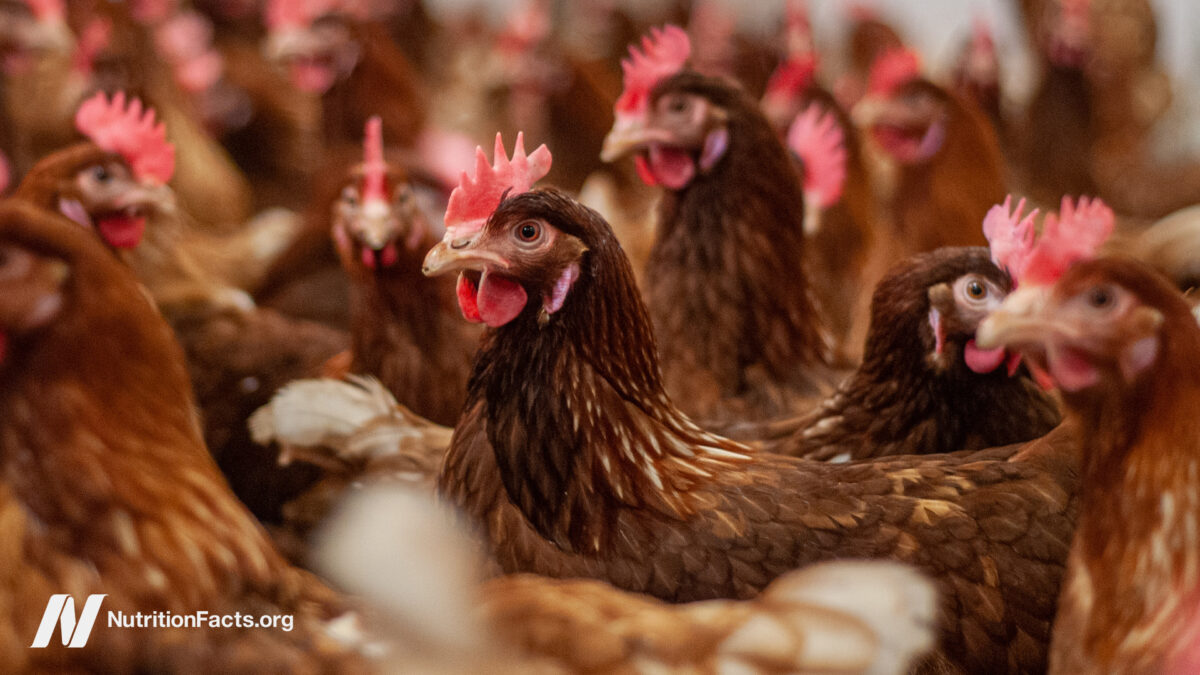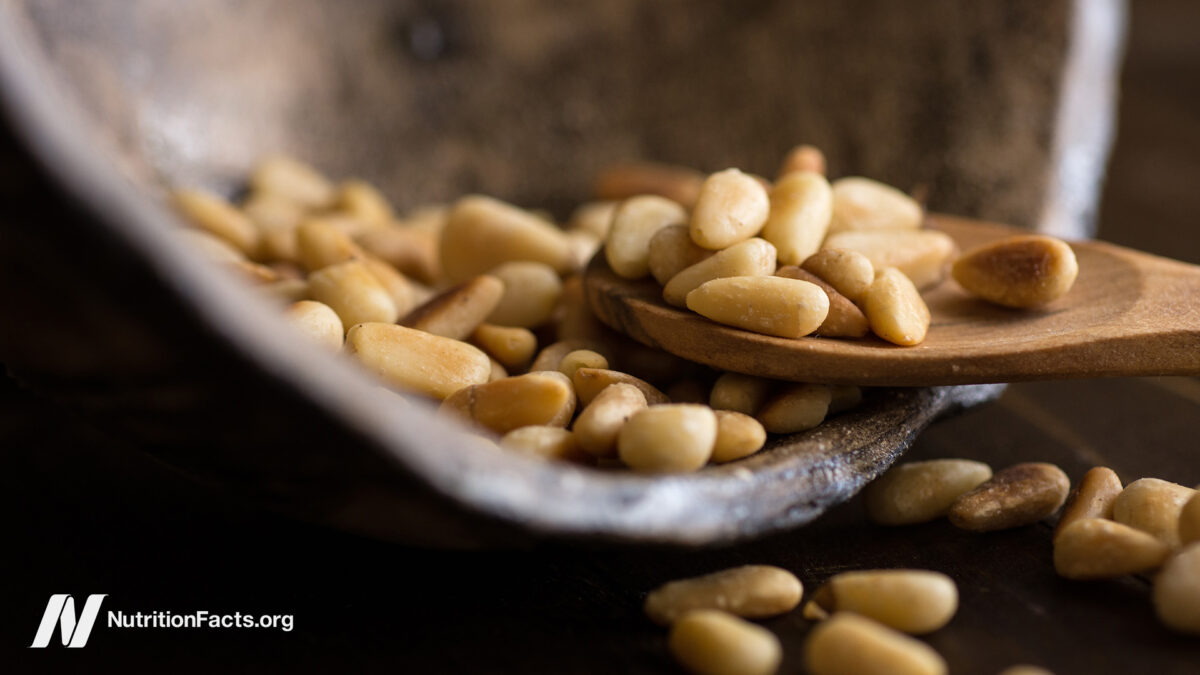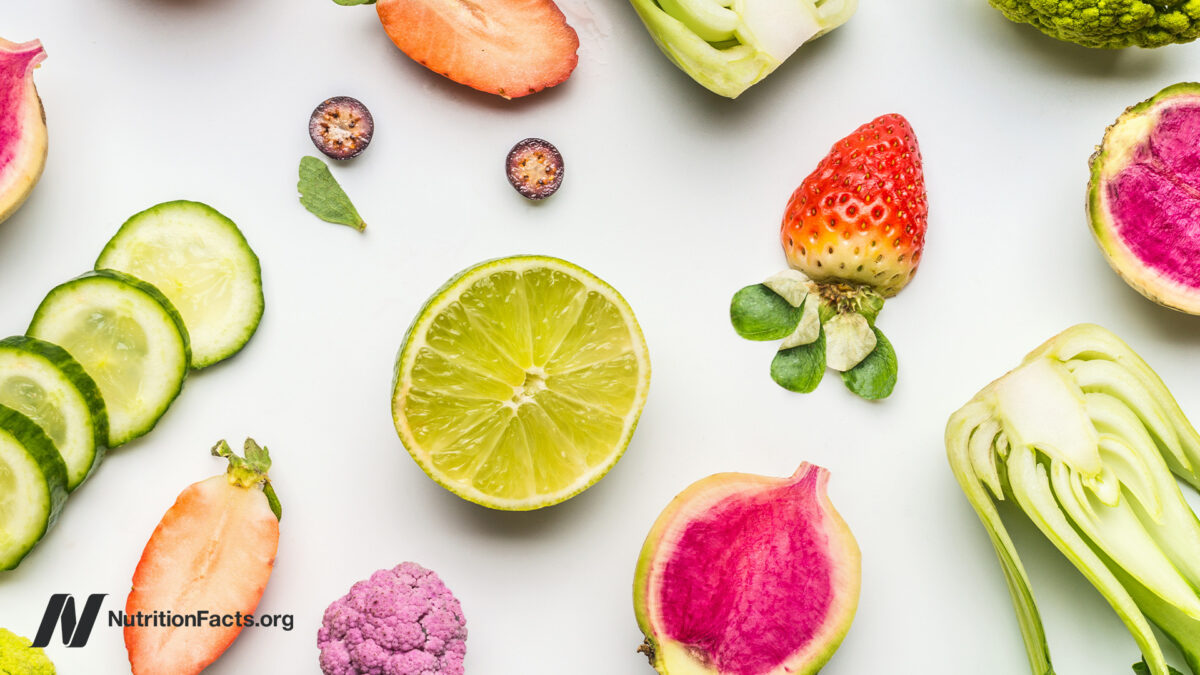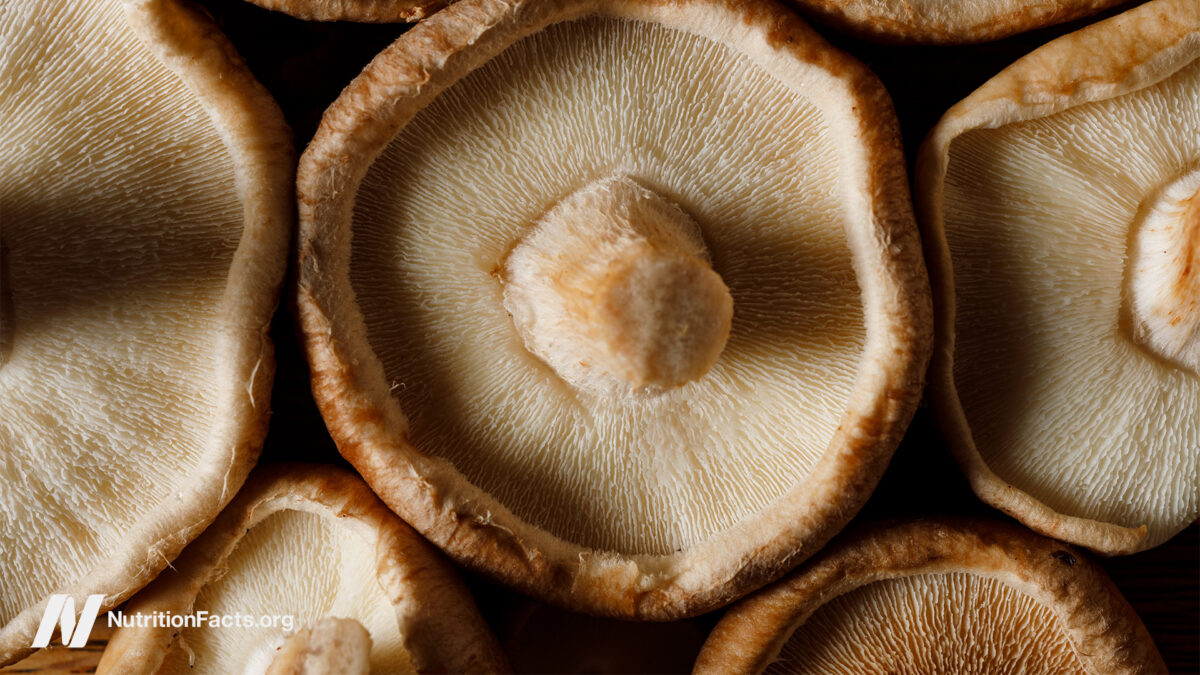Bird Flu: Emergence, Dangers, and Preventive Measures
In the United States in January 2025 alone, approximately 20 million commercially-raised birds, mostly egg-laying hens, were affected by the highly pathogenic avian influenza (H5N1). […]

In the United States in January 2025 alone, approximately 20 million commercially-raised birds, mostly egg-laying hens, were affected by the highly pathogenic avian influenza (H5N1). These numbers are staggering yet barely scratch the surface of a potentially larger threat looming over the country. If action is not taken now, the next pandemic could be far deadlier than the 1918 influenza and COVID-19.
What Was the 1918 Influenza?
According to the World Health Organization (WHO), “The 1918 influenza pandemic killed more people in less time than any other disease before or since”; it was the “most deadly disease event in the history of humanity.” Indeed, it killed more people in a single year than the bubonic plague—the “black death”—in the Middle Ages killed in a century. The 1918 virus also killed more people in twenty-five weeks than AIDS killed in twenty-five years. According to one academic reviewer, this “single, brief epidemic generated more fatalities, more suffering, and more demographic change in the United States than all the wars of the Twentieth Century.”
What Caused the 1918 Flu Pandemic?
Although the human influenza virus wasn’t even discovered until 1933, an inspector with the U.S. Bureau of Animal Industry had been publishing research as early as 1919 that suggested a role for farm animals in the pandemic. Inspector J.S. Koen of Fort Dodge, Iowa, wrote: “The similarity of the epidemic among people and the epidemic among pigs was so close, the reports so frequent, that an outbreak in the family would be followed immediately by an outbreak among the hogs, and vice versa, as to present a most striking coincidence if not suggesting a close relation between the two conditions. It looked like ‘flu,’ and until proven it was not ‘flu,’ I shall stand by that diagnosis.”
The answer to where the 1918 virus came from was published in October 2005. Humanity’s greatest killer appeared to originally come from avian influenza—bird flu.
What Is Bird Flu?
Evidence now suggests that all pandemic influenza viruses—in fact all human and mammalian flu viruses in general—owe their origins to avian influenza. Back in 1918, schoolchildren jumped rope to a morbid little rhyme:
I had a little bird,
Its name was Enza.
I opened the window,
And in-flu-enza.
Is Bird Flu Worse Than Regular Flu?
As devastating as the 1918 pandemic was, the mortality rate was less than 5 percent on average. But the H5N1 strain of bird flu virus that first emerged in China in 1997 and spread to more than 60 countries seems to kill about 50 percent of its known human victims, on par with some strains of Ebola, making it potentially ten times as deadly as the worst plague in human history.
Leading public health authorities, from the U.S. Centers for Disease Control and Prevention (CDC) to the World Health Organization, feared that this bird flu virus was but mutations away from spreading efficiently though the human population, triggering the next pandemic. “The lethal capacity of this virus is very, very high; so it’s a deadly virus that humans have not been exposed to before. That’s a very bad combination,” said Irwin Redlener, former director of the National Center for Disaster Preparedness at Columbia University. Scientists speculate worst-case scenarios in which H5N1 could end up killing a billion or more people around the world. “The only thing I can think of that could take a larger human death toll would be thermonuclear war,” said Council on Foreign Relations senior fellow Laurie Garrett. H5N1 has the potential to become a virus as ferocious as Ebola and as contagious as the common cold.
H1N1 vs. H5N1
The 1918 pandemic virus was H1N1. The annual flu strain remained H1N1, infecting relatively few people every year for decades until 1957, when an H2N2 virus suddenly appeared as the “Asian flu” pandemic. Because the world’s population had essentially only acquired immunity to H1 spikes, the virus raced around the globe, infecting a significant portion of the world’s population. For example, half of U.S. schoolchildren fell ill. H2N2 held seasonal sway for 11 years. In 1968, the H3N2 “Hong Kong Flu” virus triggered another pandemic and has been with us every year since.
So there were three influenza pandemics in the twentieth century—in 1918, 1957, and 1968—but, as the director of the National Institute for Allergy and Infectious Diseases has said, “There are pandemics and then there are pandemics.” The half-and-half bird/human hybrid viruses of 1957 and 1968 evidently contained enough previously recognizable human structure that the human population’s prior partial exposure dampened the pandemic’s potential to do harm. In contrast, the pandemic strain of 1918 was wholly avian-like. Instead of diluting its alien avian nature, the 1918 bird flu virus “likely jumped straight to humans and began killing them,” noted Taubenberger, the man who helped resurrect it. The same could be happening with the new spate of avian influenza viruses sporadically infecting people in more recent years, like H5N1. The human immune system had never been known to be exposed to an H5 virus before. As the WHO points out, “Population vulnerability to an H5N1-like pandemic virus would be universal.”
How Dangerous Is H5N1 Bird Flu?
H5N1 developed a level of human lethality not thought possible for influenza. So far, about half of those known to have come down with this flu have died. H5N1 is good at killing, but not at spreading. To trigger a pandemic, the virus has to learn how to spread efficiently from person to person. Now that the genome of the 1918 virus has been completely sequenced, we understand that it may have taken only a few dozen mutations to turn a bird flu virus into humanity’s greatest killer, and we have seen some of those changes taking form in H5N1. The further H5N1 spreads and the more people it infects, the greater the likelihood that it might lock in mutations that could allow for efficient human-to-human transmission. “And that’s what keeps us up at night,” said the chair of the Infectious Diseases Society of America’s task force on pandemic influenza.
How Did Bird Flu Emerge?
More than a century ago, researchers confirmed the first outbreak of a particularly lethal form of avian influenza that they called “fowl plague.” Plague comes from the Greek word meaning “blow” or “strike.” Later, the name “fowl plague” was abandoned and replaced by “highly pathogenic avian influenza” or HPAI.
Domesticated poultry can also become infected with a low-grade influenza, so-called low pathogenic avian influenza, or LPAI, which may cause a few ruffled feathers and a drop in egg production. Influenza viruses with H5 or H7 spikes, however, are able to mutate into the high-grade variety that can cause devastating illness among the birds. Webster’s term for H5 and H7 strains of flu says it all: “the nasty bastards.” And you don’t get nastier than H5.
Avian Influenza, Poultry, and Eggs
To avoid contracting bird flu, an influenza expert at the UK Health Protection Agency warned, “[a]void being in touching distance [of birds who could be affected]. Don’t kiss chickens.” Kissing aside, what is the risk of putting our lips on them in other ways?
In 2001, the virus was found and confirmed in frozen duck meat. The investigators concluded, “The isolation of an H5N1 influenza virus from duck meat and the presence of infectious virus in muscle tissue of experimentally infected ducks raises concern that meat produced by this species may serve as a vehicle for the transmission of H5N1 virus to humans.”
The finding of H5N1-contaminated poultry meat triggered a more extensive survey. Top flu researchers at the U.S. Department of Agriculture (USDA) looked into chicken meat. Chickens who inhaled H5N1 became infected even more systemically than did ducks. The virus spread through the internal organs, into the muscle tissue, and even out into the skin. Virus was found in both white and dark meat.
There is a precedent for bird-borne virus-infected meat. Unlike bacteria, viruses can remain infective for prolonged periods even in processed foods. Some methods of preservation, like refrigeration, freezing, or salting, may even extend the persistence of viruses in food. On the other hand, since viruses cannot replicate without living tissue, improper storage of food is less problematic.
What about eggs? “Be careful with eggs,” the World Health Organization has warned. “Eggs from infected poultry could also be contaminated with the [H5N1] virus…”
Mutating and Getting More Virulent
Within a single individual, a virus evolves, adapts, learns. It hits dead ends and tries something new, slowly notching up mutations that may lock into place the ability to effectively survive in, and transmit between, people. Every single person who gets infected presents a risk of spawning the pandemic virus. Describes one virologist, “You’re playing Russian roulette every time you have a human infection.” Experts fear that as more and more people become infected, a virus will finally figure out the combination—the right combination of mutations to spread not just in one elevator or building, but in every building, everywhere, around the globe. Then it won’t just be peasant farmers in Vietnam dying after handling dead birds or raw poultry—it will be New Yorkers, Parisians, Londoners, and people in every city, township, and village in the world dying after shaking someone’s hand, touching a doorknob, or simply inhaling in the wrong place at the wrong time. It’s happened before, and it may soon happen again.
Said a WHO spokesperson about a virus like H5N1, “All the indications are that we are living on borrowed time.” A senior associate at the Center for Biosecurity listed the indications: “The lethality of the virus is unprecedented for influenza, the scope of the bird outbreak is completely unprecedented and the change that needs to happen to create a pandemic is such a small change—it could literally happen any day.”
Never before H5N1 had bird flu spread so far, so fast, and the longer the virus circulates in poultry production systems the higher the likelihood of additional human exposure.
Can H5N1 Be Eradicated?
H5N1 may be here to stay. “This virus cannot now be eradicated from the planet,” said Center for Biosecurity director O’Toole. “It is in too many birds in too many places.” The virus seemed to be getting more entrenched. “If you described it as a war, we’ve been losing more battles than we’ve won,” a WHO spokesperson told The Financial Times. “From a public health point of view, and an animal health point of view, this virus is just getting a stronger and stronger grip on the region.”
In a tone uncharacteristic of international policy institutions, the FAO wrote: “Over this bleak landscape sits a black cloud of fear that the virus might become adapted to enable human-to-human transmission and then spread around the globe.” The urgency and alarm among those tracking H5N1’s building momentum was palpable. “It’s like watching a volcano getting ready to erupt,” described a spokesperson of the World Organization for Animal Health (known as OIE, for Office Internationale des Epizooties). “We’re all holding our breath,” said Julie Gerberding, former head of the CDC.
Breeding Grounds for Disease
The world’s three leading authorities—the Food and Agriculture Organization of the United Nations, the World Health Organization, and the World Organization for Animal Health—held a joint consultation in 2004 to determine the key underlying causes. Four main risk factors for the emergence and spread of these diseases were identified. Bulleted first: “Increasing demand for animal protein.” This has led to what the CDC refers to as “the intensification of food-animal production,” the factor blamed in part for the increasing threat.
The way we kept animals when we first domesticated them ten thousand years ago is a far cry from how they are reared today. Chickens used to run around the barnyard on small farms. Now, “broiler” chickens—those raised for meat—are typically warehoused in long sheds confining an average of 20,000 to 25,000 birds. A single corporation, Tyson, can churn out more than 20 million pounds of chicken meat a day. Worldwide, an estimated 70 to 80 percent of egg-laying chickens are intensively confined in battery cages, small barren wire enclosures stacked several tiers high and extending down long rows in windowless sheds. The cages are stocked at such densities that each hen is typically allotted less floor space than a standard letter-sized piece of paper. It is not uncommon for egg producers to keep hundreds of thousands—or even a million—hens confined on a single farm. Half the world’s pig population—now approaching one billion—is also crowded into industrial confinement operations. This represents the most profound alteration of the animal-human relationship in ten thousand years.
What Can We Do?
To reduce the emergence of viruses like H5N1, humanity must shift toward raising birds in smaller flocks, under less stressful, less crowded, and more hygienic conditions, with outdoor access, no use of human antivirals, and with an end to the practice of breeding for rapid growth or unnatural egg production at the expense of immunity. This would also be expected to reduce rates of increasingly antibiotic-resistant pathogens such as Salmonella, the number one foodborne killer in the United States. We need to move away from the industry’s fire-fighting approach to infectious disease to a more proactive preventive health approach that makes birds less susceptible—even resilient—to disease in the first place.
In the United States, the American Public Health Association (APHA) is among those advocating for “radical” (from the Latin radix, for “root”) change. In 2003, the APHA passed a “Precautionary Moratorium on New Concentrated Animal Feed Operations,” in which it urged all federal, state, and local authorities to impose an immediate moratorium on the building of new factory farms—including industrial turkey, laying hen, broiler chicken, and duck facilities. In November 2019, it reiterated its stance, publishing a new policy statement calling once again for a moratorium on new factory farms, as well as a moratorium on the expansion of existing ones.
Eating to Beat Bird Flu
The journal of the APHA published an editorial entitled “The Chickens Come Home to Roost” that went beyond just calling for a deintensification of the pork and poultry industries. The editorial questioned the prudence of raising so many animals for food in the first place, given the pandemic threat they may pose: “It is curious, therefore, that changing the way humans treat animals, most basically ceasing to eat them, or at the very least, radically limiting the quantity of them that are eaten—is largely off the radar as a significant preventive measure. Such a change, if sufficiently adopted or imposed, could still reduce the chances of the much-feared influenza epidemic. It would be even more likely to prevent unknown future diseases that, in the absence of this change, may result from farming animals intensively and killing them for food. Yet humanity doesn’t even consider this option.”
However, thanks to food innovations, this may be changing, with plant-based meats, milks, and eggs growing in popularity with expanded options in supermarkets. And, making healthier choices could also help mediate the next coronavirus epidemic by also decreasing the rates of comorbidities found to increase the risk in SARS, MERS, and COVID-19. For example, consider the underlying risk factors for COVID-19 severity and death—obesity, heart disease, hypertension, and type 2 diabetes—all of which can be controlled or even reversed with a healthy enough plant-based diet and lifestyle.
Egg-Free Eggs
There are so many delicious egg-free egg recipes, like this Garden Veggie Tempeh Scramble created by NutritionFacts.org’s own executive director.
Conclusion
H5N1 was discovered in chickens decades ago, a flu virus that would forever change our understanding of how bad pandemics could get—a flu virus that appears capable of killing half the people it infects. Imagine if a virus like that started explosively spreading from human to human. Consider a pandemic a hundred times worse than COVID-19, one with a fatality rate not of one in two hundred but rather a coin flip of one in two. Thankfully, H5N1 has so far remained a virus mainly of poultry, not people, but H5N1 and other new and deadly animal viruses like it are still out there, still mutating, with an eye on the eight-billion-strong buffet of human hosts. With pandemics, it’s never a matter of if, but when. A universal outbreak with more than a few percent mortality wouldn’t just threaten financial markets but civilization itself as we know it.
A pandemic triggered by a bird flu virus could leave hundreds of millions dead. “An influenza pandemic of even moderate impact,” Michael Osterholm, the director of the Center for Infectious Disease Research and Policy at the University of Minnesota, wrote, “will result in the biggest single human disaster ever—far greater than AIDS, 9/11, all wars in the 20th century and the recent tsunami combined. It has the potential to redirect world history as the Black Death redirected European history in the 14th century.”1 Hopefully, for humanity’s sake, the direction world history will take is away from raising birds by the billions under intensive confinement so as to potentially lower the risk of us ever being in this same precarious place in the future. The silver lining of COVID-19 is that the world will be better prepared for the next global health crisis. Tragically, it may take a pandemic with a virus like H5N1 before the world realizes the true cost of cheap chicken.
1 Kennedy M. 2005. Bird flu could kill millions: global pandemic warning from WHO. “We’re not crying wolf. There is a wolf. We just don’t know when it’s coming.” Gazette (Montreal), March 9, p. A1.

 ShanonG
ShanonG 



















![The 2026 AI Search Benchmark Every SEO Leader Needs [Webinar] via @sejournal, @lorenbaker](https://www.searchenginejournal.com/wp-content/uploads/2025/11/1-259.png)










